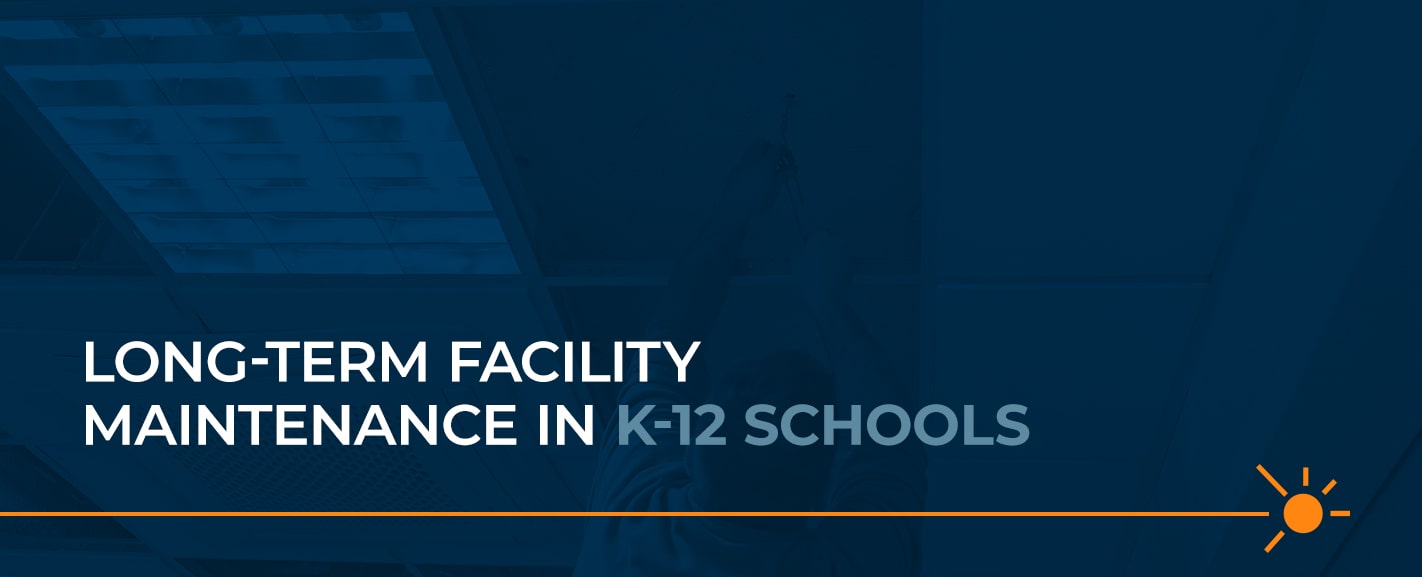
With limited funding and rising costs of operations, districts can’t afford to pay for ongoing maintenance staff training for the more technical aspects of running a facility. As a result, certain key aspects of facility maintenance go unaddressed, which can lead to costly fixes. Students, parents, faculty, and community members should all feel comfortable in a well-maintained building, and administrators are faced with the increasing complexity of addressing district needs. So, how should one anticipate and prepare? Some of the main culprits in the expenses of aging buildings are:
- Inefficient energy usage
- Outdated systems
- Lack of IT and communications infrastructure
- Inadequate cooling and ventilation
Many of these issues exist in K-12 buildings, and they can seriously impact the quality of your student’s education. Many district buildings were built several decades ago, and though a building may receive renovations and updates over time, facility issues eventually become apparent in most of these older buildings. Updating and maintaining advanced facilities requires significant expertise and dependable professionals. Collaboration to develop, manage, and communicate the Long-Term Facility Maintenance Plan is made possible by mySiteIQ.
What Is Long-Term Facility Maintenance?
Long-term facility maintenance is a comprehensive plan to bring older buildings up to date over the course of an agreed-upon timeframe with our team and your district. It is aimed at achieving the most efficient use and safe learning environment conducive to future-ready schools.
To understand the importance of a long-term maintenance plan for district facilities, you can think of it in terms of car maintenance. There are many similarities between a facility maintenance plan and a car maintenance plan. For example, cars need many services — such as oil changes — performed routinely in order to continue operating at peak performance. Key areas of district facilities require similarly regular maintenance. A long-term K-12 facility maintenance plan is a collaborative effort between our team and your district to consider the current use and goals of your space by the community and its student learning. The plan also reviews the health and safety of current infrastructure as it relates to its architecture, engineering, and design integrity such as roofing, electrical, HVAC, lighting, and plumbing.
Technology is always changing, and building equipment is not exempt. When districts hire long-term facility maintenance teams, they are also hiring licensed professionals with in-depth technical and industry knowledge who keep up with ongoing research. Being able to assess old equipment and arrange new systems to work together requires a lot of planning, coordination, and experience, so be sure to use professionals with the industry experience needed to provide the best maintenance plan for your facilities.
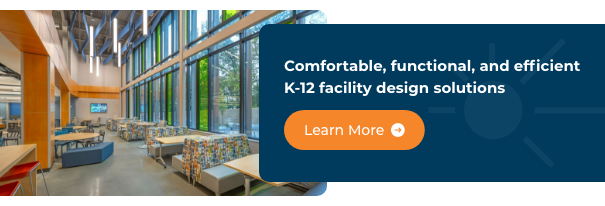
Benefits of Long-Term Facility Maintenance
There are many benefits that come with planning for the future and having an effective facilities strategy. They include:
- Contributing to the district’s financial and instructional well-being
- Improving the cleanliness, safety, and orderliness of facilities
- Creating a more efficient facilities strategy, which decreases operational costs
- Identifying issues proactively rather than addressing them when it becomes an expensive repair, unsafe environment, or catastrophic failure
- Extending the life of district buildings
- Increasing the efficiency, which also helps our natural environment
Formulating a long-term maintenance plan is also cost-effective and efficient and helps to avoid costly pitfalls by deferring necessary maintenance for too long. When committed to a regular district facility maintenance plan, buildings avoid incurring disastrous facility costs in the near and distant future. Here is how a plan can decrease costs over time:
- Avoiding unexpected replacement costs
- Requiring fewer renovation costs and fewer repair jobs, such as fixing leaking ceiling tiles
- Cutting overhead costs thanks to increased system efficiency and schedule
Another benefit to having a maintenance plan is that it focuses on all aspects of your building’s health. Since they house children for several hours every day, district buildings can’t afford to fall behind on important maintenance issues. Here are most of the most critical areas, depending on your specific district’s setup and needs:
- Mechanical, HVAC
- Electrical, Lighting
- Plumbing, Water Conservation
- Fire Alarm Systems
- Building Envelope, Roofs
Long-Term Facility Maintenance vs. Master Planning
There are two main ways to think about facility maintenance planning — long-term facility maintenance and master planning. A master facility plan includes all building needs required to support a building owners’ objectives. It is comprehensive and will consider space use requirements, technology, and programming needs. Conversely, an LTFM Plan is focused on maintaining the existing assets, it is primarily focused on the physical needs of a facility. In short, an LTFM Plan is a part of the client’s Master Facility Plan but focused solely on maintaining the building environment for comfort, energy, safety, and security.
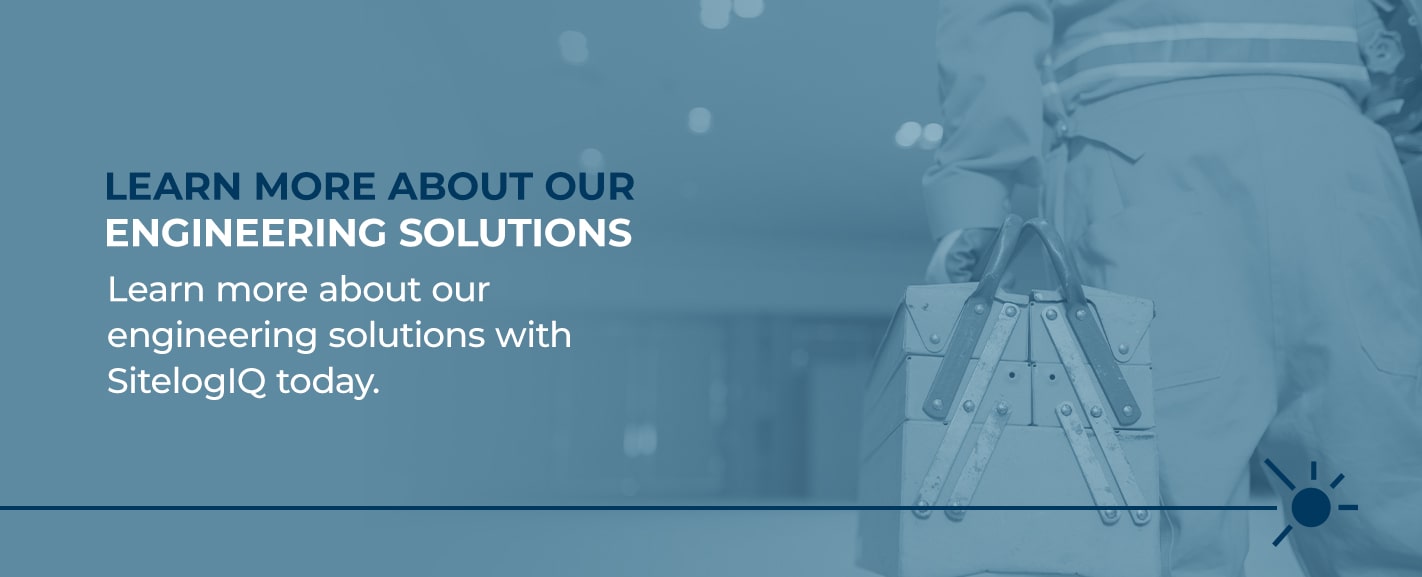
Master planning concentrates on future goals. It should reflect the vision and mission of the district overall. In many cases, finding the budget for upgrading an asset is unaffordable due to a lack of plans and inefficient facility care. The master plan should reflect the vision and mission of the district overall. In addition to facility needs, a master plan should include a roadmap for:
- Space usage
- Technology
- Programming needs
In many cases, funding source limitations lead to re-prioritization of funds that normally would have allocated for ongoing or deferred maintenance needs. Having a master plan helps address the big picture changes that need to be made so that school facilities meet the educational requirements and evolving teaching approaches for future learners.
Long-term maintenance focuses on repairing and extending the life of assets currently within a building. It focuses on existing equipment and systems. It does not include replacements like a master plan does.
How Deferred Maintenance Ties Into Long-Term Facility Maintenance
Deferred maintenance is the act of neglecting building maintenance and repairs. Too often districts find themselves deferring necessary facility maintenance due to budget short falls, or pay for other pressing needs.
The problem with deferred maintenance is districts often find themselves in an expensive and crisis situation when equipment fails. At that point, it can force the district to make difficult decisions to reallocate moneys to pay for those needed repairs. This can have a negative impact on teacher experience and student learning alike.
This reveals how deferred maintenance relates to long-term facility maintenance. A school district’s long-term facility maintenance plan will involve more repairs and cost more money if years or even decades of maintenance have been put off prior to setting the plan in motion. Conversely, engaging in a long-term facility maintenance plan will keep those repairs manageable.
Addressing maintenance needs over time ensures that district facilities have the longest, most useful life possible.
How Flex Workspaces Shape Focus and Engagement in the Classroom
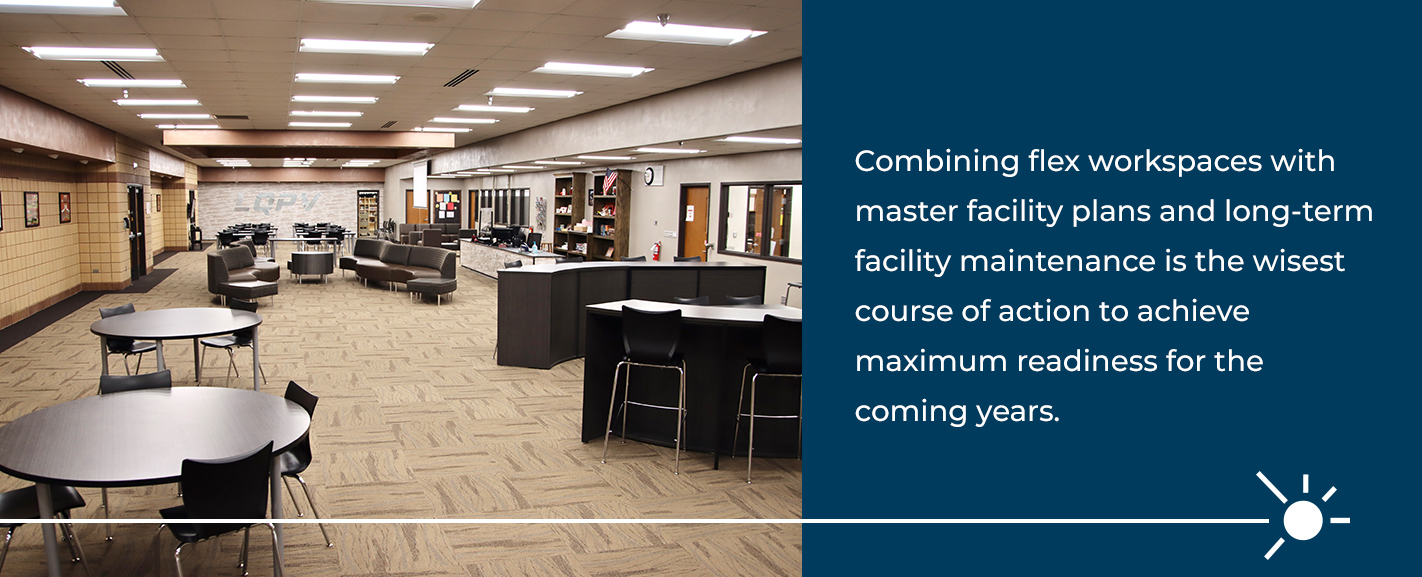
One approach to planning for your school’s future is to create flexible spaces that can serve multiple uses throughout the school day. Single purpose rooms such as cafeterias are potential lost opportunities for adaptive learning spaces, whereas flex spaces can easily be adapted and, therefore, are future proof.
It is impossible to know what the future will hold for your school district and what the modern classroom needs of the day will be. But it is possible to plan for every eventuality, keeping your district facilities ready for any need that could arise.
Plus, with the current emphasis on health and safety in school buildings, having flex spaces is essential for the well-being of teachers and students. Flex spaces give the opportunity to put more spaces between desks during cold and flu season. Other times, teachers can group desks together to ensure students are accomplishing friendly group work. These re-imagined spaces support a greater focus on equity and learning environments that enhance the educational experience for all students.
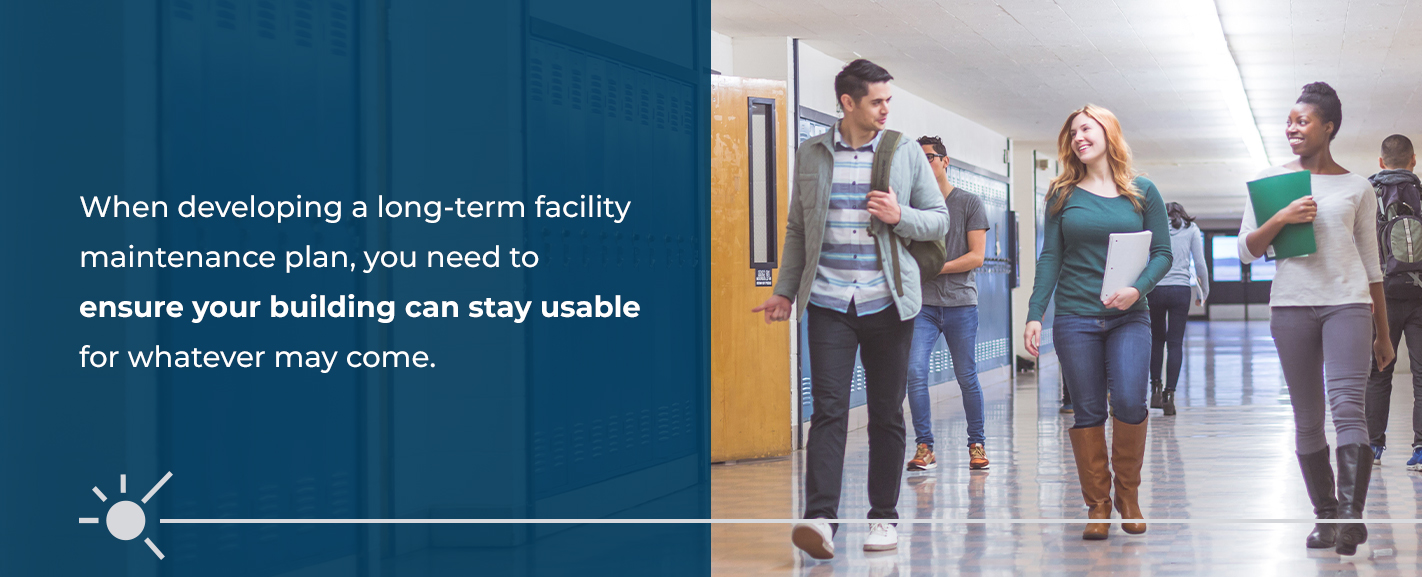
SitelogIQ’s Approach to Long-Term Facility Maintenance
We know facility management can be a challenge with many hurdles and roadblocks, which is why our approach is dependable, consistent, and led by highly skilled professionals. Our solutions create healthy, comfortable learning environments that promote productivity and improved experiences.
For K-12 facility solutions, SitelogIQ’s comprehensive approach stands in direct contrast to this silo approach by providing school districts with a single point of contact who will provide them with up-to-date information about the project, answer any questions they might have, and provide the peace of mind that can only be found by working with an experienced energy services company. We are dedicated and involved in all aspects of facility planning, design, and management. We have experience in mechanical, plumbing, energy efficiency, lighting, and building controls solutions.
Learn More About Our Engineering Solutions

We believe the mission of educators should be supported and enhanced by the spaces in which our students learn and achieve. Our K-12 solutions are grounded in the best practices for facilities maintenance, meeting the needs of your students staff, and community members. We design solutions that are flexible and scalable to changes in your vision and stand the test of time. Learn more about our design & engineering solutions with SitelogIQ today. Learn more about our design & engineering solutions with SitelogIQ today.


